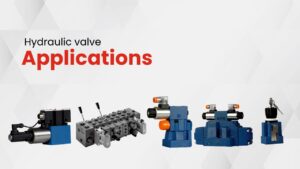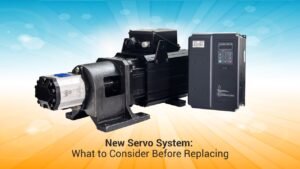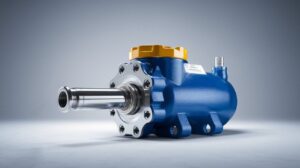Automotive linear sensors is an important technology in the quick revolution of the electric vehicles EVs. Linear position sensors are important in improving the precision, efficiency and smart control systems, starting with battery control to motor control, and motor safety. Due to EV manufacturers moving towards smarter, smaller designs, Linear position sensor demands particularly in India are still increasing. The ability to select the appropriate sensor could have a positive impact on driving, decrease maintenance, and improve the intelligence of the vehicle.
Step 1: Understanding Why Linear Position Sensors Matter in EVs
Linear position sensors are applied to measure movement, distance and position change with great accuracy. This assists in EVs to develop smart feedback systems, which regulate:
- Acceleration
- Braking
- Steering response
- Hog performance (Battery and motor).
They also make sure that the EV components are operating efficiently all the way to their lifetime.
Step 2: Key EV Components that Use Linear Position Sensors
The primary uses of Linear position sensors of EVs are listed below:
- Battery Management systems (BMS)
Battery cell compression and expansion monitors.
Guarantees battery life, thermal stability and safety.
- Electric Motor Control
Helps to deliver the accurate torque.
Presents a real-time feedback to allow easy acceleration.
- Brake and Suspension Systems.
Allows sophisticated driver-assist.
Strengthens the EV comfort, road grip and safety.
- Steering and Drive-by-Wire Systems.
Electronic steering control assistance.
Autonomous EV technology needs to be supported by these requirements.
Step 3: Benefits of Automotive Linear Sensors for EVs
Why are they a game-changer?
| Benefit | Impact on EV |
| Excellent resolution sensing | Improved performance and reliability |
| Rapid response time | Rapid and efficient control activities |
| Energy efficiency design | Enhances EV battery range/life |
| Small dimensions | Favorable to light vehicle design |
| Increases life time span | Saves EV maintenance costs |
These Linear sensors in the automotive industry can be used to create smarter, faster, and safer EVs.
Step 4: Types of Linear Position Sensors Used in Electric Vehicles
| Sensor Type | Use in EVs |
| Linear Potentiometers | Inexpensive feedback control |
| LVDT (Linear Variable Differentiating Transformer) | High accuracy motor and suspension sensing |
| Hall-Effect Linear Sensors | Small sensing of EV electronics |
| Magnetostrictive Sensors | Battery and motor controls can be used with a high level of durability |
In case you would like to purchase linear position sensors in India, it is imperative to select a type of sensor that aligns with the application in respect of performance and longevity.
Step 5: How to Choose the Right Sensor for Next-Gen EVs
In choosing Automotive linear sensor, we have to consider:
Precision Requirement – great precision required to autonomous EVs.
Operating Temperature – Should be able to withstand hot and cold climate.
Durability and Vibration Resistance- EVs require long life stable sensors.
Interoperability with EV Electronics – Should comply with CAN, IoT and AI.
Budget and Supplier Reliability – Go with Prefer Affordable linear displacement sensors India of reliable suppliers.
Common Model Codes of Hydraulic Valves
THM-1PS50-01, THM-PS500-B100G14MSA, THM-PS500-B250G14MSA, THM-PS500-B400G14MSA, THM RH-M0710-S1-PD63-DIO-SO, THM RH-M0100-S1-PD63-DIO-SO, THM RH-M0400-SI-PH60-V01B-S0 (T014511315), THM RH-M0160-S1-DU10-S1B602-S0-THM+288501 (T014511974), THM RH-M0200-SI-PH60-A01B-S0 (T014511314), THM RH-M0230-S1-PD63-DIO-SO, THM RH-M0350-S1-DU10-S1G502-SO (T014511484)
Trusted Supplier for EV Linear Position Sensors in India
In the process of marketing Industrial linear position sensors in India, THM Huade provides the best sensing technology that meets the EV standards.
THM Huade – The Best EV automotive linear sensor supplier.
Receive professional advice, bulk purchasing and high-end sensor models to your EV projects.
Final Thoughts on the Role of Linear Position Sensors in Electric Vehicles
The concept of linear position sensor is revolutionizing the EV technology in the sense that it enhances control, safety, and intelligence. Electric cars are smarter with more intelligent Automotive linear sensors, which make them more efficient and responsive. Whenever you intend to upgrade EV parts or purchase Linear position sensors in India, it is always recommended to acquire the sensors, which are of industrial quality.
Looking to purchase the best linear position sensor for EVs, robotics, or industrial use? Contact THM Huade today and get the right sensor solution for your needs.
FAQs of Automotive Linear Sensors
Q1. Which sensor is used in an electric vehicle?
Electric cars utilise linear position sensors, rotary encoders and Hall effect sensors in the control of the motor, battery system, braking and pedal position sensing. Linear sensors are important in correct motion and safety control.
Q2. What are next generation sensors?
Next-generation sensors refer to the next generation smart sensors that have been developed with high accuracy, digital processing and IoT or AI enabled sensors. They provide a better performance, small size, and real-time statistics, which is suitable to EVs and contemporary automation.
Q3. What is a linear sensor?
Linear sensor is a machine which identifies and measures linear motion. It transforms mechanical movement into electrical signals to be monitored and controlled in industry, motor vehicles and robots.
Q4. What are the three types of position sensors?
Position sensors are of three major categories: linear, rotary, and proximity sensors. All of them are designed to measure all sorts of movement and positioning in machines and cars.
Q5. What is the difference between LDT and LVDT?
Linear Displacement Transducer (LDT) is an non-contact type of measurement that employs magnetostrictive technology and can be commonly found in hydraulic systems. An LVDT (Linear Variable Differential Transformer) is an electromagnetic induction method that is characterized by great accuracy and stability in industry and aerospace.


